PCB Soldering Steps
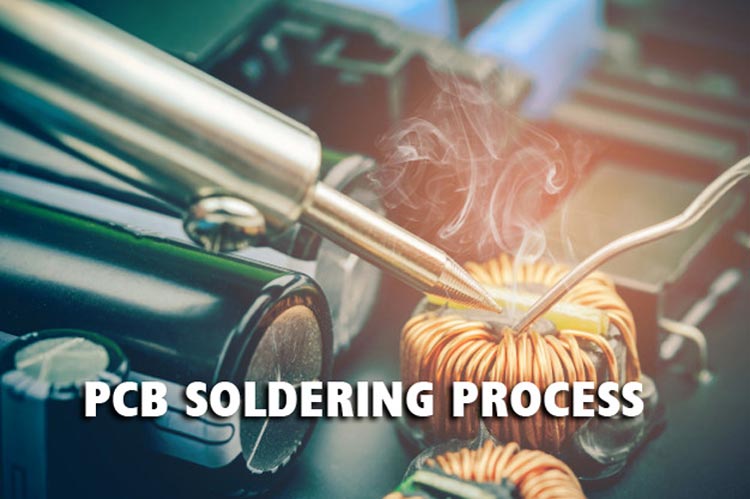
Soldering is one of the basic, yet most important skill that each and everyone who is dealing with electronic components should be aware of. In the world of technology, the ability to repair electronic devices is like a gift one should posses, for which, soldering is the fundamental skill. This article contains everything you need to know about soldering and the step by step procedure to perform soldering on a PCB board properly.
What is Solder?
Grammatically the word solder can be understood with two different meanings, when the word solder acts as a noun, it refers to the alloy (Combination of two different metals) that come in a long thin wire in spools or tubes. When the word Solder acts as a verb, it represents the action of joining two pieces of metal together to form a solder joint.
Leaded and Lead-free Solder
In the traditional method of soldering, the most commonly used type of metals are lead (Pb) and alloys of lead, this type of solders are called leaded solders. Lead is the most used type of metal because of its low melting point and its ability to create great solder joints. As lead is harmful to humans and leads to lead poisoning when exposed in a larger amount, some key individuals and countries decided that it is best not to use leaded solder anymore.
Lead-free solder is very similar to leaded solder, except the fact that it contains no lead, it is made of mostly tin and other trace metals such as silver and copper.

Which Solder to Use for the Job?
When it comes to choosing the solder, its completely your choice to choose between lead and lead-free soldering. Although it's best to use lead-free solder as a concern of safety, the safety comes with its own price. As I mentioned early, lead has been used as a solder because its properties are ideal for soldering. We can’t expect those properties in lead-free solders in the absence of lead. One of the most important property that isn’t available in lead-free soldering is a low melting point. Tin has been used as the replacement for lead in lead-free soldering and it has a higher melting point than lead, hence it needs more heat to perform soldering. Many lead-free soldering requires a chemical agent called the flux core to support the flow of lead-free solder. This makes the lead free soldering more expensive than leaded soldering.
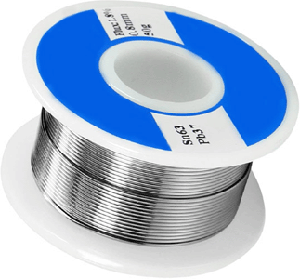
Apart from choosing between lead and lead-free solder, there are many other facts to be considered while choosing a solder.
- There are many kinds of solder compositions that we can use apart from lead and tin.
- The solder comes in a variety of gauges or widths, so you can use a thin piece of solder for small components, similarly, you can use thicker wire for large components.
- The solders are available in many other forms apart from wires.
Soldering Irons
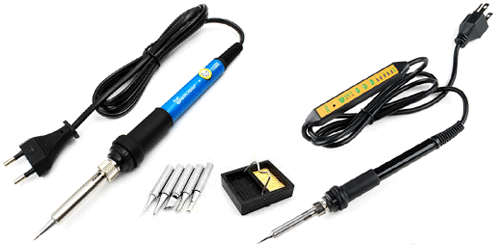
Soldering Iron is the most important tool of all in the Soldering process. If you want to complete the process of soldering, you need solder and a soldering Iron. The soldering irons are available on the basis of different varieties and range from simple to complex. No matter how different the soldering iron and how different they operate, all the soldering irons are designed for the same purpose, heating the solder.
Preparation for Soldering
The first step involved in the process of soldering is the preparation of your tools. First, You should keep a soldering iron and solder wire and a sponge to clean the tip of the soldering iron. Take a wet sponge and squeeze out the extra water from the sponge and keep it aside in a box for cleaning. Choose a sponge that can provide better friction to wipe off the debris that gets stuck during soldering.

Keep the soldering iron on the stand and turn on the power supply, it will get heated up in 30 seconds to a few minutes to reach its maximum heating temperature. If your soldering iron is ready to be used, it should be able to melt the tip of solder wire. You can start your soldering process once the iron is able to melt the solder.
Soldering Order
Not all the electronic components react the same way to heat, hence you should be aware of which component should be soldered first and which can be soldered last. You can begin by organizing all the components and labeling them, the organizing helps in making the process easier. Before starting the soldering process, make sure you have grounded yourself and also make sure to wear a grounded wrist strap for eliminating the static charge that could affect the components on the board.
When you start the soldering, you should start from the component that is least affected by the heat buildup. You can start from soldering IC sockets first and then go for resistors and capacitors, for capacitor soldering, you should solder the capacitors under 1µF first and then you can go for the electrolytic capacitors that are above 1µF.
Once you are done with the capacitors, you can start soldering diodes, LEDs, and then the Transistors. The transistors could be easily damaged by the excess heat so be more conscious while you are soldering the transistors. Next comes the wires, jumpers, and other components in the order of soldering. Finally, you can solder the ICs, you should know that some of the ICs will be available in the antistatic packaging due to static sensitivity, you should leave them in the package itself until they are needed.
How to solder a component on the PCB?
The PCB board comes with the pre-drawn marking (Silkscreen) of the components to be soldered on a particular location along with its polarity. When it comes to PCB board soldering, we need to use the Through-hole technique.
Step 1: At first, you should place the parts of the components in the hole as per the marking
Step 2: Slightly bend the leads to fix it in the position.
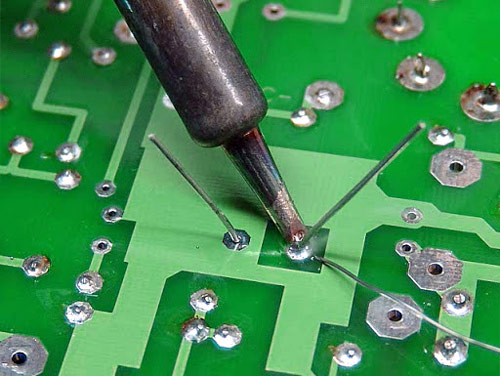
Step 3: Place the solder tip on the pad so that both the lead of the part and pad gets equally heated
Step 4: Heat them for a second or until the solder melts and gets applied to the parts of the component.
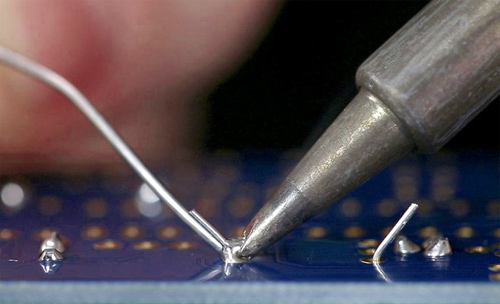
Step 5: Now, remove the iron and solder wire and check whether the solder joint is properly done.
Step 6: A Good solder joint will form a conical shape if the shape is formed properly, you can cut off the component lead.
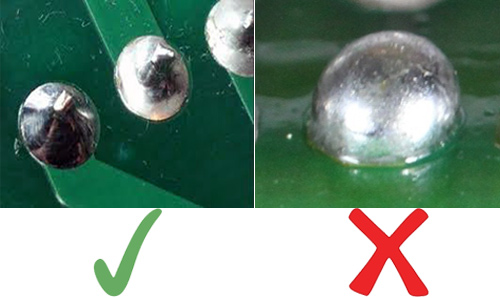
Note: If you need to add an IC to the board, always use an IC socket rather than directly soldering the IC because the IC might break due to the heat from the soldering iron.
Conclusion
I hope you have completely understood the basics of soldering. This method can be used to solder the components on a new PCB board. If you want to replace a component from the PCB, you should desolder the component to be removed from the PCB by using a heat gun or a desoldering pump or any other method to remove the component and replace it with the new one using the above technique.








Comments